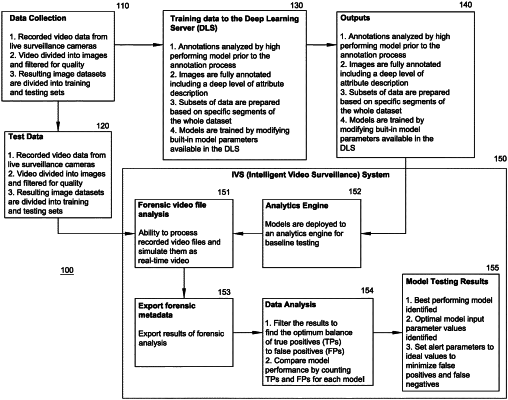| CPC H04N 7/18 (2013.01) [G06F 18/2148 (2023.01); G06F 18/217 (2023.01); G06F 18/28 (2023.01); G06V 10/25 (2022.01); G06V 10/764 (2022.01); G06V 10/82 (2022.01); G06V 20/46 (2022.01); G06V 20/52 (2022.01); H04N 7/183 (2013.01)] | 34 Claims |

|
1. A method for training an object detection device, the method comprising:
receiving a video stream;
selecting a set of frames from the video stream;
detecting a presence of an object in one or more frames of the set of frames;
inserting bounding boxes in an area of the object in each of the one or more frames;
annotating the bounding boxes with one or more attributes of the object;
storing the one or more frames and the annotated bounding boxes in a database, the database configured to be searchable by at least one attribute of the one or more attributes;
training a detection model using the database, wherein the training includes varying a first parameter of the detection model;
analyzing a second set of frames from the video stream using the detection model to determine a number of true positive (“TP”) events and a number of false positive (“FP”) events, wherein the second set of frames that is different than the first set of frames;
creating a dataset of the analysis of the second set of frames;
filtering the dataset using a second parameter;
determining a ratio of TP events to FP events (“TP/FP”);
determining a ratio of FP events to TP events (“FP/TP”);
converting the FP/TP to a percentage (“% FP/TP); and
evaluating a performance of the detection model based at least in part on a ratio of % FP/TP to TP/FP.
|